What’s the Best Food in Crete? Top 13 Meals and Drinks You Can’t Miss!


Even if you don’t know it for sure, you've probably already eaten something from Greek cuisine. And especially if you are a European, I'm ninety-nine percent positive you did!
It belongs—rightfully—to the most famous cuisines all over the world and has a long tradition. Ever since advanced civilizations and ancient times we hear stories about wealthy rulers and warriors being drowned in wine and buried in delicious food at magnificent feasts. Well, what a life huh?
What I really appreciated about Cretan cuisine was how fresh and light everything was. Coming from the dumpling-and-sauce part of Europe, it was a nice change for once!
So, do you want to know what I had, liked or hated? Continue reading my ruthless assessment of Cretan dishes—and some drinks as well!
1. Tzatziki
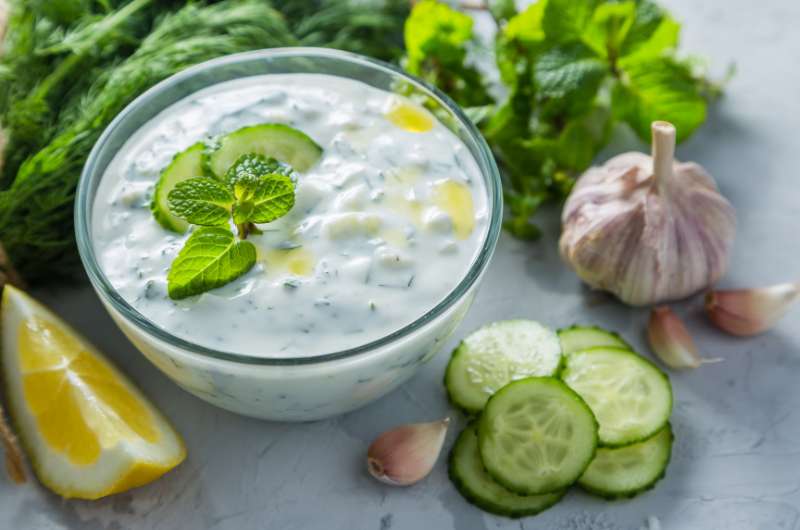
Tzatziki
Can't start with anything else than probably the most famous Greek food—tzatziki. I mean, it is not a meal per se, more like side-dish or sauce.
It is made from white yogurt, thin slices of cucumber, garlic, and—behold—olive oil. There is probably not a meal Greeks and Cretans would eat without olive oil.
Did you know that Greece is first in the consumption of olive oil per person? It is unbelievable 20 liters a year! Compared to 1.8 liters in France or only 1.1 liters by the average American. People even sweat olive oil, I suppose!
But back to tzatziki. You can eat it with anything savory you can imagine. Or maybe even sweet? But I'm not that type of a person, it's up to you guys to try. I like myself too much to try such unholy things.
It is perfect to combine with meats, pastry or vegetables. You can take basically anything and dip it into tzatziki. I love garlic, so I don’t mind the aftertaste of tzatziki, that can be a bit much for somebody. But you can wash it down with some spirit, that you will definitely get offered after your meal on the house.
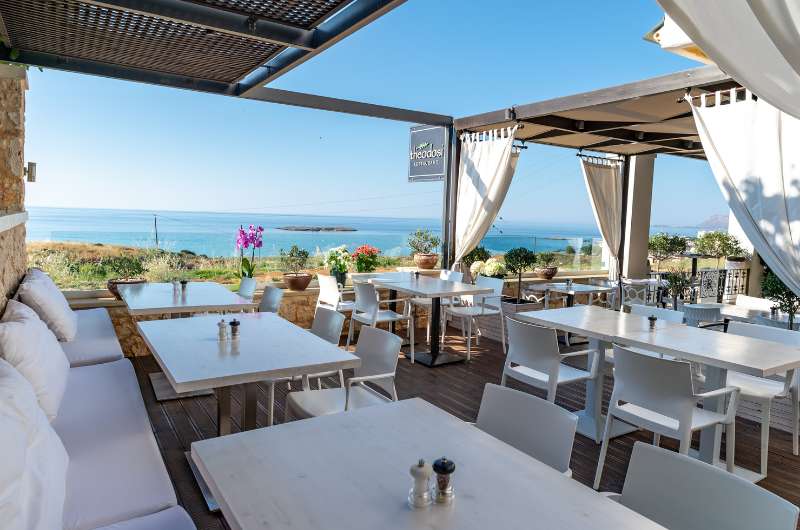
The wonderful Theodosi in Chania
Restaurant tip: In Chanian restaurant Theodosi I had tzatziki as starters and then Mediterranee chicken as a main course. And all I can say is—wow. Not only was the food perfect and I don’t have anything bad to point out, but the whole experience was worth the visit. The staff was friendly, and the prices were nice, but what made it more extraordinary was the scenic view. Can't say anything else than recommend!
Our top tips:
- You can't leave Crete without having a true Greek gyros!
- Having shots of Ouzo with locals is a social experience you can't miss.
- Treat your sweet tooth properly and get fresh baklava from a local pastry shop!
2. Feta
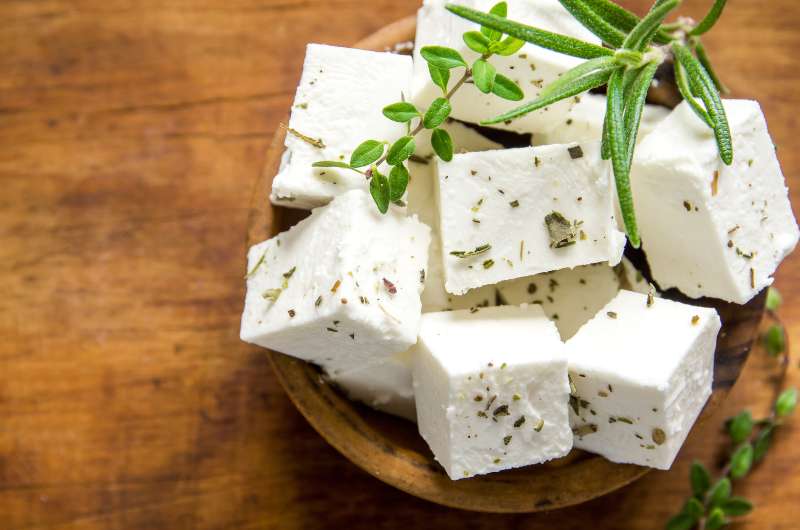
Feta cheese
Crete is famous for producing many delicious types of cheese. The most famous—and my personal favorite—is unequivocally feta.
Feta cheese is produced from sheep’s milk, or it can also contain some goat milk. But no cow milk! That's not true Feta then at all.
In fact, true Feta is only the one that has been made in Greece! Don’t even try the other knockoffs. I can tell you right away, they won’t compare to the real ones at all.
Feta cheese has a nice salty taste that is perfect for putting in salads. It gives the vegetables extra taste and if it is not too hard, it blends in super well.
As I mentioned in the beginning, Cretan cuisine is mostly fresh and light. And this is exactly the case. If you are after a whole day long beautiful hike in the gorge—which Crete has so many, I wrote an article about them—in flaming hot weather, nice salad with vegetables, olives and feta is just the thing.
Restaurant tip: After we finished the Imbros Gorge hike, we stopped in Imbros Tavern in Komitades village. As it is right at the end of the hike with a slightly suspicious exterior, it looks like a true tourist trap I hate. But as we were super hungry after the hike, we decided to stop by there and we made the right decision! We had salad with Feta and some meat and pastry. Everything was homemade, so fresh and delicious and for a reasonable price. What can I say, I'm glad I didn’t judge the book by its cover—for once!
3. Wine
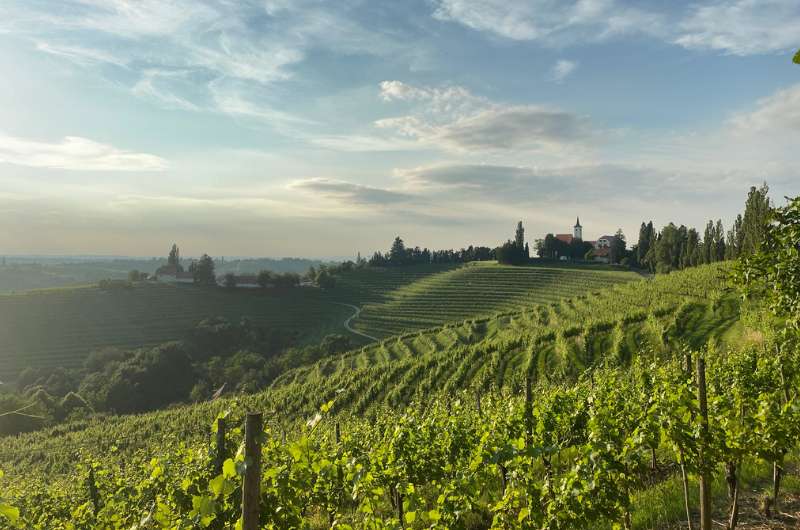
You have to taste the Cretan wine!
Wine has a long history in Crete—you can date the wine production all way back up to when Minoan civilization inhabited the island.
To Cretan wine it is sometimes being referred to as cheap or not top-class quality. Now, I strongly disagree with this prejudice. It is as wrong as the one that says the Greeks are lazy—they proved me wrong in both! Not that I'm strongly opinionated, you know me, but I learned these hardworking guys and gals make some topnotch wine!
We love to discover local wineries and taste the differences between various national wines. We decided to visit Lyrarakis winery estate, where we took a free tour through the vineyard with a paid degustation.
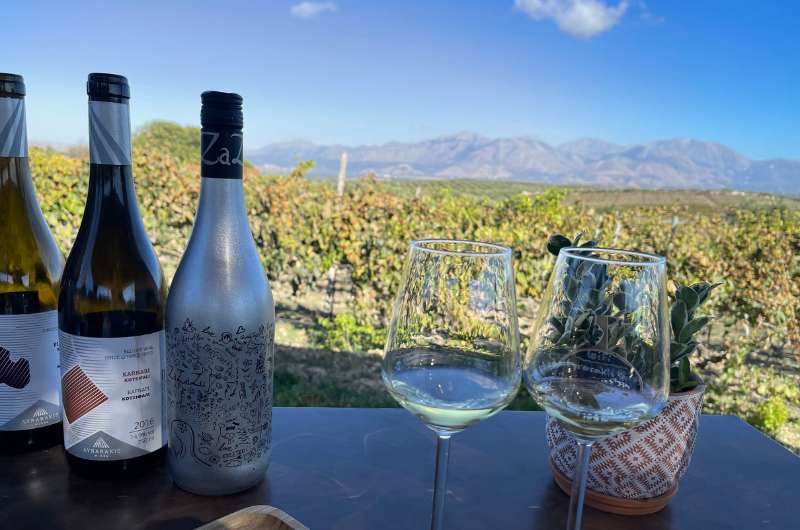
Lyrarakis winery refreshments (read about our wonderful trip there)
The tour itself was not only about the wine but also its extremely pretty panoramas on the way. As the knowledgeable guide explained to us, the production of the wine is fully organic. Not because of some crazy hippie shit but because the wines are simply at that high level of quality. That’s some higher efficiency skill I can respect!
Overall, we liked most of the wines we tried during our stay in Crete. They tasted good, but man they were strong! The alcohol percentages of the wines were higher than we were used to, so maybe slow down a bit on the tastings. You want to remember something from your trip, right?
Tip: Lately, I really enjoy learning more about local alcohol production around the world. There was that incredible whisky distillery in Scotland, my two favorite places in Belgium’s Bruges were beer tours, and in Peru, I learned what else you can make from grapes in the Ica vineyards!
4. Baklava
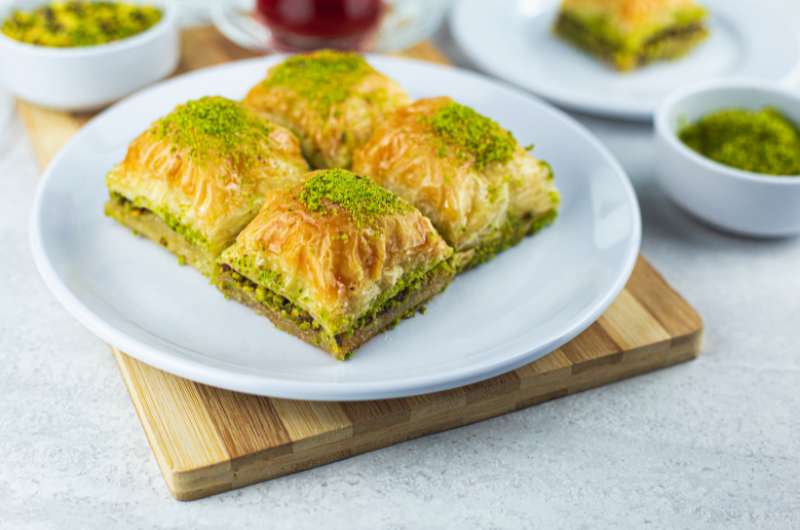
Baklava
Well, let's set the record straight right at the begging. It is not completely known who invented baklava as many nations are claiming it is them who created this sweet and delicious treat—Turks, Greeks or other Balkan countries.
I fell in love with baklava in Turkey, but I don’t give a damn about this nonsense of claiming historical rights. It is pasty for god's sake guys, why argue about that? Some people... But before the third world war about the genesis of baklava starts, let's I will tell you a bit more about it.
It’s nothing fancy, heck it’s only some dough, nuts and syrup, but man oh man do they make them to-die-for!
It’s how they are made that makes or breaks the baklava. Basically, the dough has to be the thinnest thing ever in order to make the finest layers of nuts (generally pistachios but can also be walnuts or hazelnuts) alternating with the dough. Douse in butter, bake.
The final step—soaking in a syrup, will make all your cavities sensitive, but your taste buds will feel on cloud nine!
I can’t explain it, it was just so good! Make sure you’re eating fresh baklava and not the stale variety that has been packed forever, waiting for an unsuspecting tourist to buy it as a souvenir. If you see them cutting it up in front of your own eyes, you’re getting the good stuff.
You can get baklava at places dedicated just to the sweet or at restaurants as a dessert.
5. Gyros
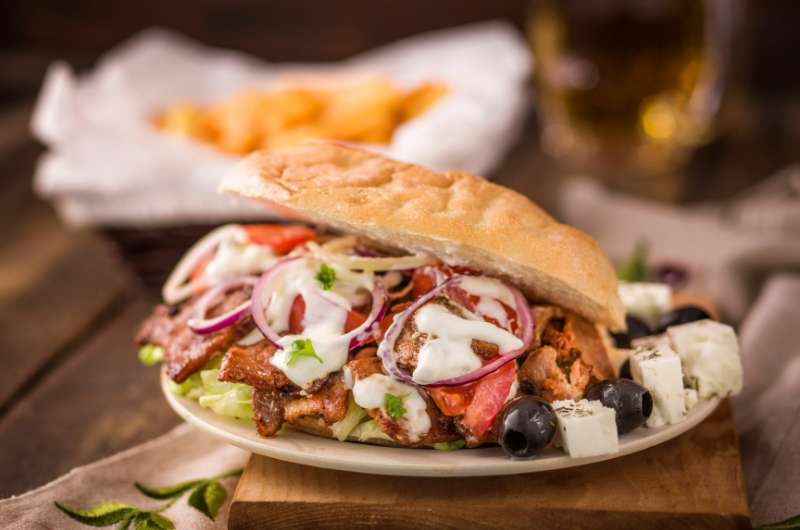
Gyros in pita bread
Gyros is a popular street food dish that you can get probably in every city all around the world. But only after getting one in Crete I did get the true sense of how this meal charmed almost everyone who has ever tried it.
All of us have on our minds the same notoriously known picture of a vertical cone-shaped mixture of meat on the stick spinning around in front of the hot grill that is being thinly sliced off as it cooks. And spinning, and spinning, and spinning... Sorry, I dreamt away a bit while drooling on my keyboard!
In Greece they mix mostly pork and chicken meat together and then place it in warm pita bread along with many vegetables of your choice—mostly cucumbers, tomatoes, lettuce and onions—with tzatziki being poured over. And voila, something extraordinary for your taste buds is ready!
Even though I had gyros many times in my life, it was never as good as the one I had there. I don’t know how those Greeks do it, but they know their meats! Everything was perfectly balanced, amount of vegetable, spiced enough and still fresh. If you haven't had gyros in Greece, you didn’t have one at all!
6. Meze
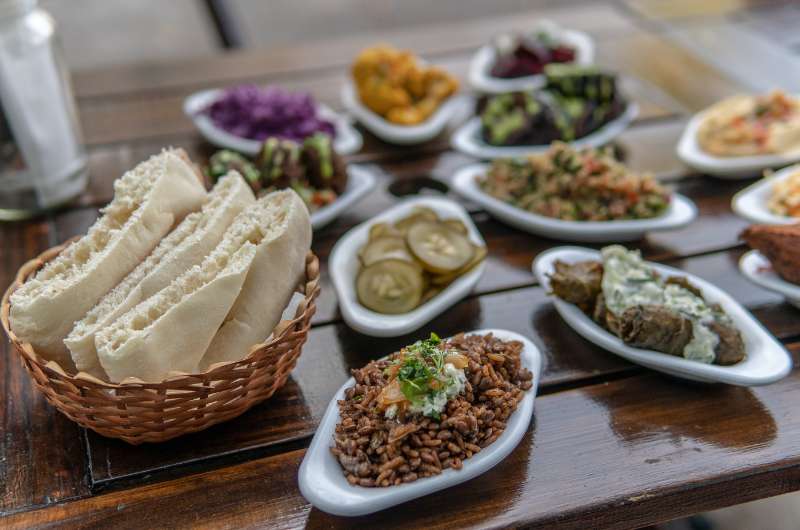
Meze
If you are going out drinking with your friends in Crete, you can't do so without accompanying your spirits with meze. If you are drinking, you are having meze with it—no question!
Meze is not a meal per se, it is more like a term that describes small plates of savory snacks and finger food. They are served along with shots for you to take small bites while you drink. I would compare it to Spanish tapas. But not in its contents!
The meze is a mixture of cold and warm snacks that are paired with the type of alcohol you drink. Or it can differ on the occasion and place you get them.
They can be “simple” with olives, some Cretan cheese, crackers and dried tomatoes, or fancier with meatballs, seafood and fries. If you are in a fisherman village along the seaside, the meze will be probably from seafood and fish more than in the other inland parts of Crete.
7. Souvlaki
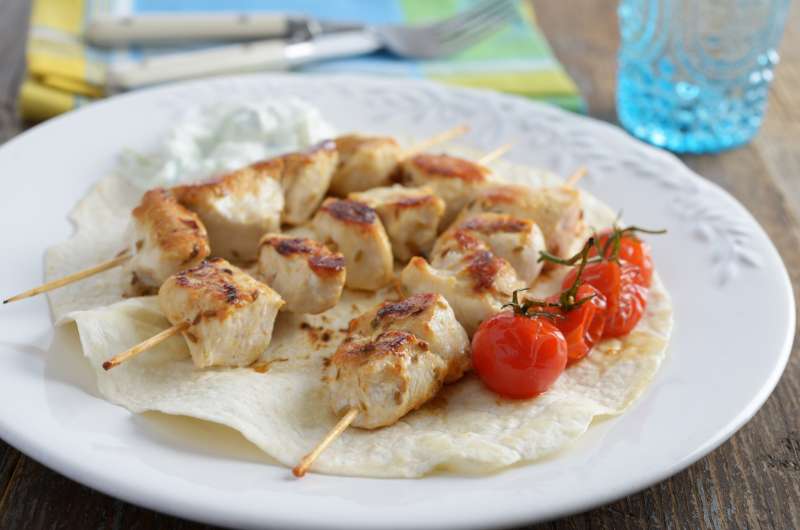
Souvlaki
Something quite like gyros, but at the same time not at all. Souvlaki is skewed pork, chicken or sometimes lamb meat, grilled in chunks that are pierced through with a skewer.
Souvlaki is usually served with pita bread, tomatoes, onions and yoghurt or tzatziki. I know, now it sounds exactly like gyros, but it tastes different, trust me.
Lately, more grills—places that serve souvlaki—are offering a vegan version of it. It is made from grilled vegetables instead of meat and seasoned. So, if there are any vegetarians present, don’t worry, you don’t have to miss this meal.
8. Lamb balls in tomato sauce
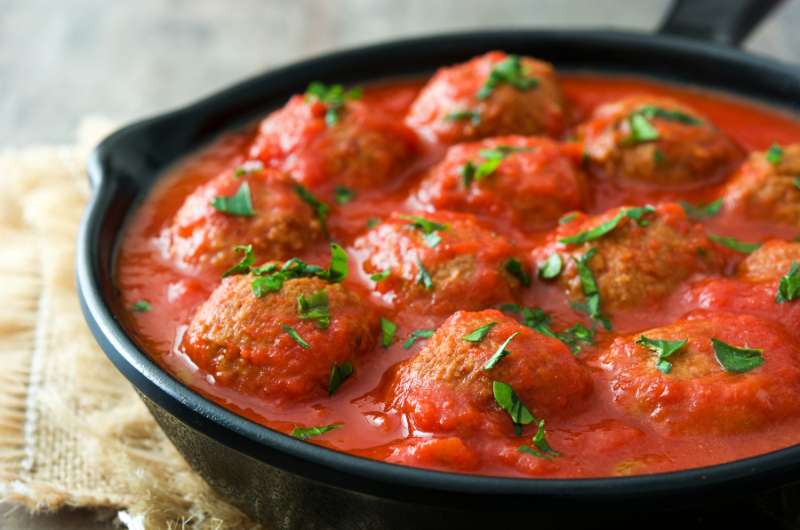
Lamb meatballs
As you probably noticed from the list of meals I already gave you, Greeks love minced meat. Most of their dishes are somehow modified versions of minced meat of many kinds served with various side-dishes or dips and sauces.
So, as we discovered more and more Cretan restaurants and new dishes, Karin tried balls from minced lamb meat in tomato sauce. And it immediately became her favorite dish of the trip. As basic as it may sound, the taste was overwhelming.
I've already said it once in this article and I'm going to say it again. Greeks are absolute pros in cooking meals from meat. I don’t know why that is, but the way they prepare it is just extraordinary. I love meat and being a vegetarian is a total nightmare for me. Like it is honorable, that you think you are doing something for the environment, but LAMB BALLS guys! You just can't willingly decide not to eat them. You just can't.
Restaurant tip: The Five Restaurant is a trendy restaurant with modern Greek restaurant. Every course is about €10 and you need to order like 4 or 5 of them. We had pasta with capers, tabouleh, ceviche and lamb balls—and everything was amazing. On top of that the views from the restaurant are stunning, so I recommend booking a table for the evening to enjoy the sunset. And do so in advance, the restaurant was full. No wonder, I had one of the best dishes ever there.
After these amazing dishes we stayed in Mossa Well Being Hotel near Chania and we had a great time there! It surely lives up to its name. Our room was very spacious and clean but oh my god the beds. I had the sleep of my life. Maybe it was also thanks to the high ceiling of the room, ergo it was full of fresh air.
The breakfast was continental and à la carte style with many delicious options so I think even picky eaters can find something nice to start their day with there. Personally, I really enjoyed the breakfast options that Mossa offers.
The prices are from €140 per night, excellent breakfast included.
9. Seafood
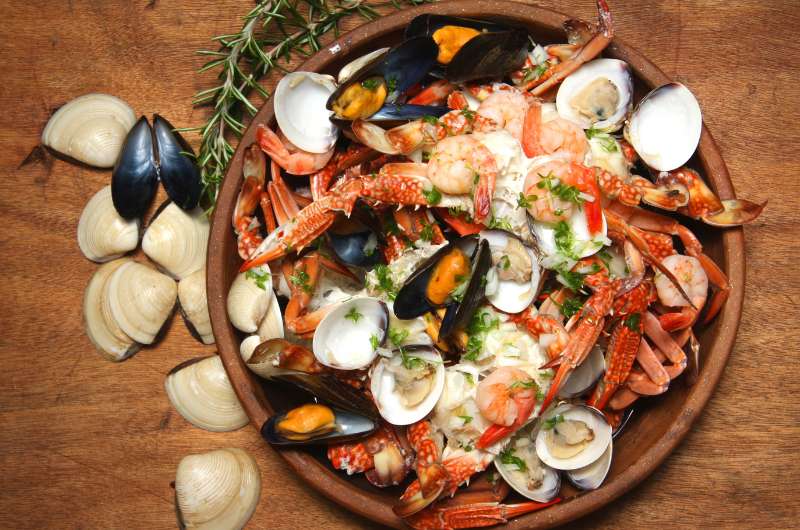
An of course, the seafood
As Crete is an island, you know there are plenty of seafood dishes in almost every restaurant. However, meat dishes are more popular amongst Cretan people than seafood or fish. But if you are from an inland country—like me—you really appreciate fresh and delicious seafood meals. You try one and then you simply have to get your hands on more.
I have to mention the fried calamari we had. It is a common meal in almost all countries with access to the sea, so I was not surprised to see it on the menu in Cretan restaurants. We had some as a starter dripped with lemon. Yummy!
Restaurant tip: 7 Thalasses is seafood and fish restaurant with a kind of Asian and Greece fusion that worked well for me. If you are in a mood for a nice fresh fish, this is the place. We had sushi and a tuna steak and ceviche, and we both enjoyed it a lot! The price was reasonable, the check was €60 for us both.
10. Ouzo
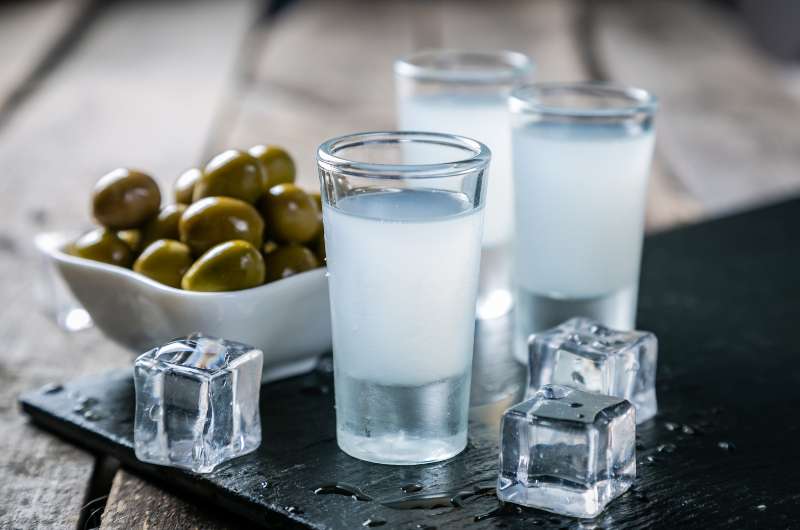
Ouzo—the national Greek aperitif
If alcohol could be an official national symbol, Ouzo would be the Greek one. This unique spirit is almost everywhere, and Greeks are accordingly proud of it—I'm actually surprised there is not a picture of a bottle of ouzo on their flag!
Ouzo is made by distillation of alcohol and aromatic herbs—mainly anise, that you taste the most. It is often mistaken for raki—a Turkish spirit that is made from grapes.
And how to drink ouzo? Well, the brave ones can take it in shots, but as it has at least 37.5%, it probably won't last long for you, would it? You can mix it with water and ice—that causes a nice effect that turns it into a milky white long drink.
The one rule you have to obey under all conditions—don't drink ouzo without meze! Pair it with some nice fresh seafood and enjoy the drinks with your group or friendly locals and enjoy the experience of socializing. Cheers. Or as true Cretan would say—Yamas!
11. Moussaka
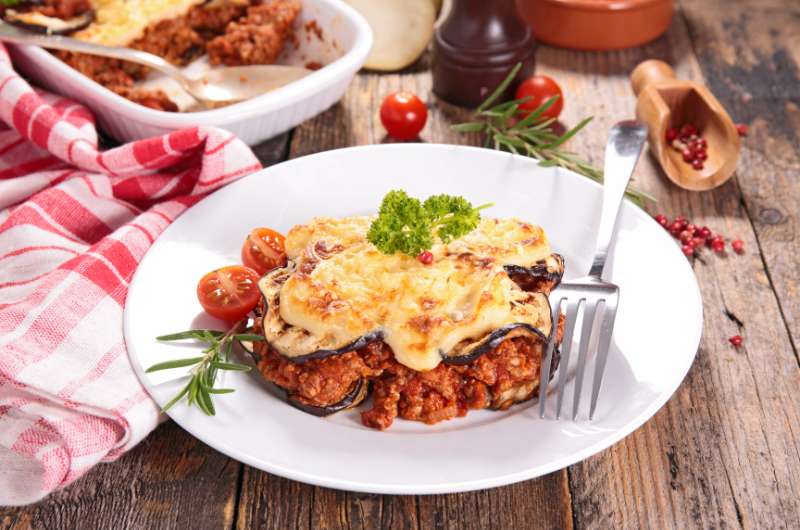
Moussaka
Another well-known Cretan dish I can't skip is Moussaka. But I'm going to be honest with you, I didn’t enjoy it as much as other meals I had the opportunity to try. For me, it is only a different type of lasagna, nothing extra.
The only difference is that instead of pasta, you layer the minced meat with potatoes and eggplants. Then it is the same—tomato sauce, bechamel and bake. I mean, it is healthier than the Italian version, but it still didn’t quite blow my mind.
Greeks don't eat Moussaka every day, only for special occasions as a festive dish. Glad I was not born there then!
12. Dolmadakia–stuffed vine leaves
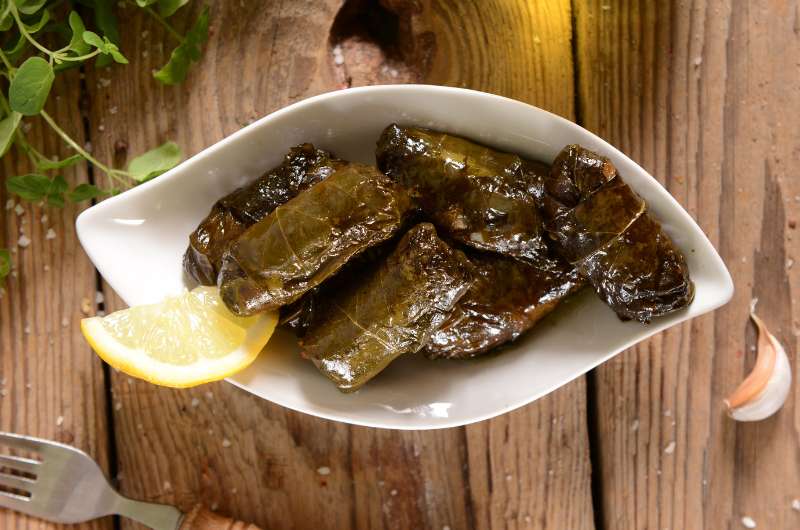
Dolmadakia
Dolmadakia are vine leaves filled mostly with rice and vegetables and—very surprisingly—minced meat. However, the vegetarian version is the most popular.
Every part of Greece has different ingredients they fill the dolmadakia with. In Crete it is mostly shredded eggplant, zucchini or artichokes.
At first, I was skeptical and didn’t want to try dolmadakia. Why would you eat leaves? But once again, I was proven wrong, and it was delicious. Don’t hesitate to try as well!
Restaurant tip: Another restaurant we visited was Pagopoieion in Heraklion.. In this review I would be more critical than in others. The staff was slow and not as friendly as we were used to in Crete. We ordered salads and bread, which was actually pretty nice for the price. The experience was nothing special, but I wouldn’t say it was all bad. I was just not as excited about the restaurant as I was about the others.
13. Dakos
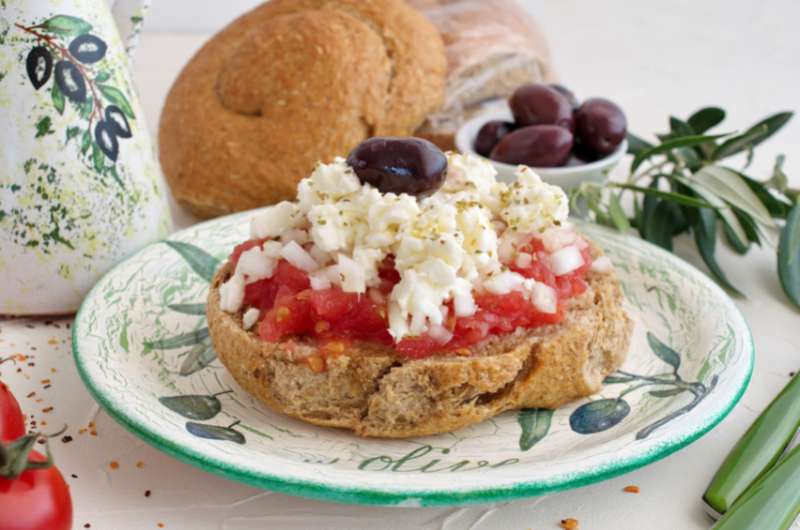
Dakos
Last but not least, dakos. This traditional dish has everything you look for during a warm day visiting one of the many stunning beaches Crete has to offer. It is light and the freshness even cools you down!
Dakos is such a simple dish, you would be surprised how it can be so goddamn delicious. It is a generous amount of tomatoes chopped on tiny little pieces, covered in crumbled feta or myzithra cheese, sprinkled with oregano and dripped with nothing else than olive oil. Then you put this delicious mixture on a piece of rusk and there you go. It can't be easier than that.
What makes it that delicious is the quality of the ingredients. Cretans are overall very strict about the quality and freshness of their food. It didn’t happen even once to us that we would get something in a restaurant that wasn’t up to the highest standards.
You might also be interested in reading:
- A Packed 7-Day Itinerary for Crete
- 11 Best Gorges for Hiking in Crete with Tips
- 10 Day Trips from Chania You Should Put on Your Bucket List!
- The Ultimate Guide to the 13 Best Beaches in Crete (+ map)
- How to Visit Samaria Gorge on Your Own—A Complete Guide
This post contains affiliate links. I earn a small commission if you make bookings through my links, at no additional cost to you. Thank you for your support!











Comments | Thoughts? Give us a shout!